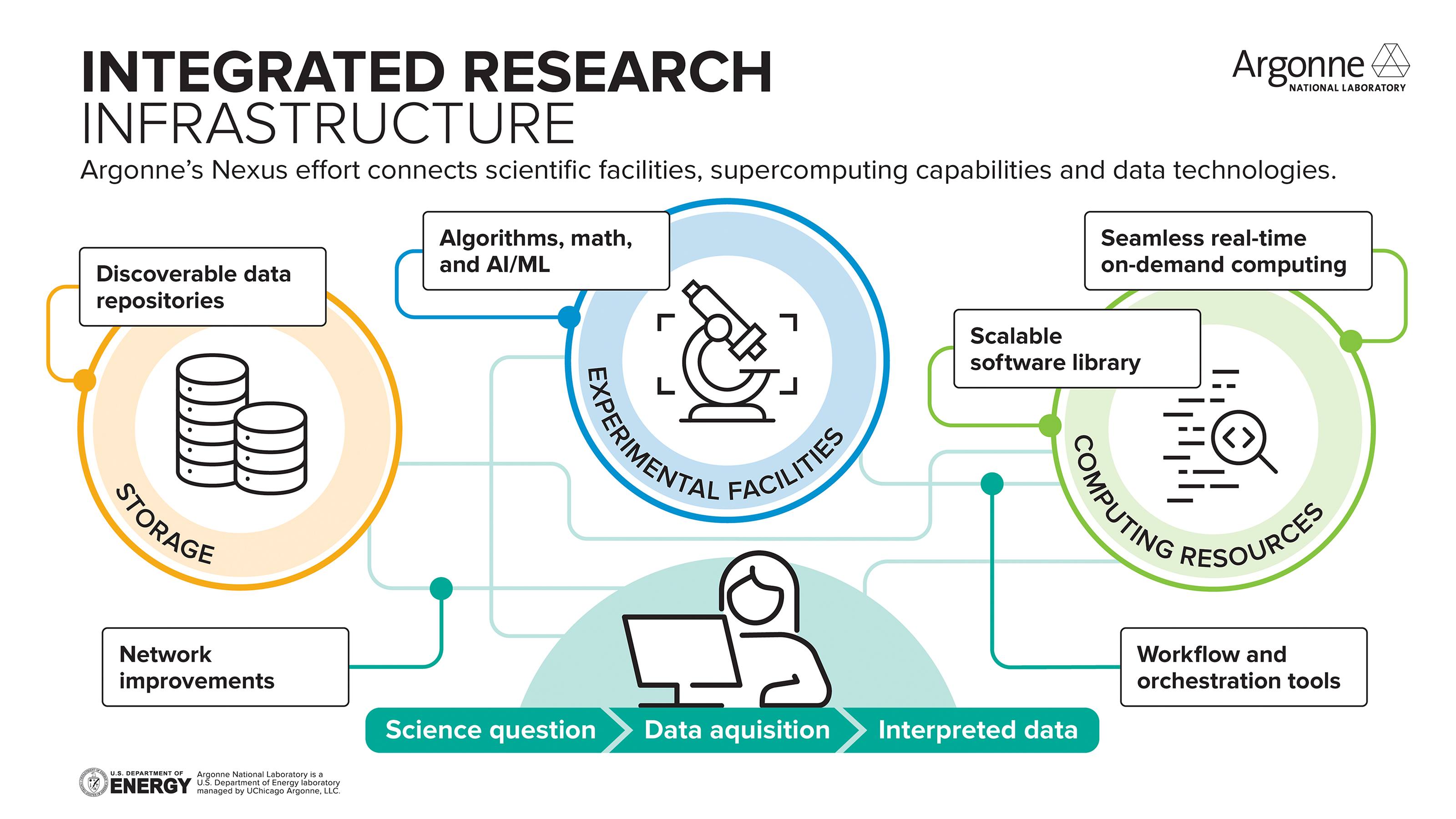For over a decade, Argonne National Laboratory researchers have been developing tools and methods to blend its world-class computing resources with data-intensive experiments. This connected approach, called Nexus, encompasses:
- Powerful facilities including the Argonne Leadership Computing Facility (ALCF) and Argonne’s Advanced Photon Source (APS), and an exploration of science-time analysis of experimental data from remote DOE user facilities. The ALCF and APS are DOE Office of Science user facilities open to the world’s scientific community.
- Artificial intelligence/machine learning and edge computing to conduct real-time analysis of experimental data on leadership-class computing resources, with AI eventually suggesting future experiment directions.
- Autonomous Discovery and self-driving labs that streamline processes, save resources, and accelerate the pace of discovery.
Nexus builds on the Globus research automation fabric for data management and its cloud-hosted federating services. The Nexus efforts have included Balsam, an exploration in a unified platform to manage high-throughput workflows across the high performance computing landscape.
Argonne researchers are creating new techniques for automating inter-facility workflows. Workflows that support experimental research activities largely feature the same general patterns and have the same general steps, such as data collection, reduction, inversion, storage and publication, machine-learning model training, experiment steering, and coupled simulation. By identifying how to express the steps in general terms, researchers aim to create workflows that are reusable and adaptable to different experiments.
